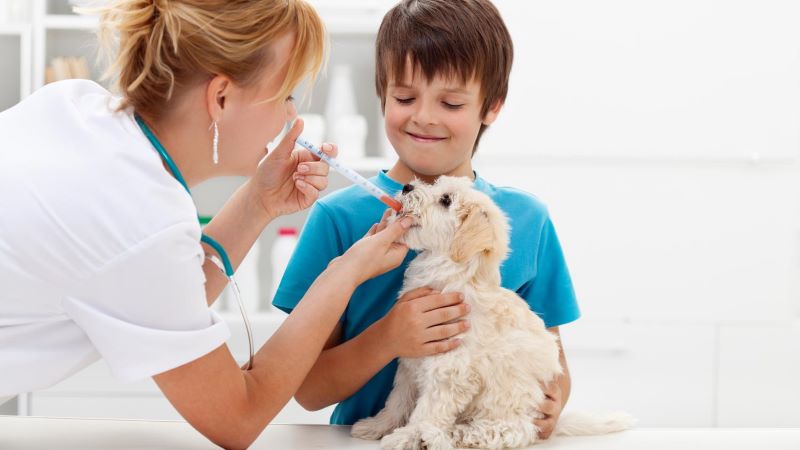When our dog was eleven, she was diagnosed with a thyroid disorder that required us to give her a pill twice a day, once in the morning and once at night. As she continued to age and her hips began to give out, we started giving her another pill to reduce inflammation in her joints. Add to that her monthly heartworm pill and when that dog saw us coming around mealtime she ran the other way. She was so tired of taking pills!
There are many tricks to the trade of getting your pet to take meds. From hiding his pills in cheese, to mixing it in with his food, to using Pill Pockets, fur moms and dads will do anything to get their beloved four-legged babies to take their medications. But have you ever stopped to think about how dangerous those pet pills could be in the wrong hands?
When it comes to our own medications and protecting our children, most of us have it down pat. We keep our meds behind locked cabinets and opt for child-resistant containers. But do you do the same with your pet’s meds? According to a recent article in Parents magazine, there has been an increase in the number of kids under 5 being taken to the E.R. after ingesting pet meds. Let’s talk tips on preventing a trip to the hospital with your child.
- REQUEST child-resistant packaging when getting pet’s medications filled.
- CHECK your pet’s bowl for any pills or pill residue if you mix your pet’s medications into his food. Also, check around his bowl to make sure he hasn’t spit any pills out. If your pet is prone to spitting out pills, you may choose to feed your pet when your child is not around.
- LIMIT exposure to topical meds. If you use a topical flea/tick/heartworm prevention medication, administer it when your child is in another room and remind him not to touch your pet’s fur until the medicine is dry. Put away the medicine promptly.
- DISPOSE of pet meds properly. Instead of tossing or flushing expired pills, place them in a child-resistant container and store them out of reach of your children, until the next National Prescription Drug Take Back Day. The next one occurs on October 28, 2017, and subsequent collections occur every sixth months. Click on the link for locations and hours.
Pet-proofing medication
Now that we’ve covered protecting your children, let’s talk pets…
- DO NOT give your pet human medications, unless your vet recommends it.
- FAMILIARIZE yourself with the potential side effects of veterinary medications and keep a careful watch on your pet while medication is in his system.
- AVOID overdoses. In her post, Top Ten Pet Poisons to Avoid Like the Plague, Dr. Patty Khuly reminds pet owners of the medical truism, “Any drug strong enough to help you is strong enough to hurt you.” Pills, human and veterinary, that are candy coated (or meat flavored) to improve taste can be irresistible to our furry friends.
- STORE pet medications separately from human medications. In his post, Pet Poisoning Prevention: Five Tricks of the Trade, Dr. Justine Lee tells the cautionary tale of pet owners accidentally taking their pet’s medication and giving their human medication to their pet unintentionally.
The appropriate medication can improve your pet’s quality of life, but pills also have the power to harm when taken inappropriately or accidentally. When it comes to medications, have you child/petproofed? Take a moment to secure your meds and your pets’ meds today. It only takes a few minutes, but it can prevent a trip to the hospital or the emergency vet.

